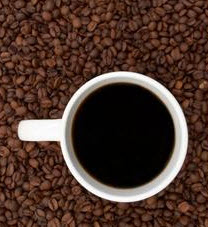 After the article I wrote on aspartame came out, many people asked me about sucralose, found in the little yellow packets and also known as Splenda. Even if you are one who says “I never use artificial sweeteners,” sucralose is found in some surprising places you might not suspect.
After the article I wrote on aspartame came out, many people asked me about sucralose, found in the little yellow packets and also known as Splenda. Even if you are one who says “I never use artificial sweeteners,” sucralose is found in some surprising places you might not suspect.
Like aspartame, sucralose is found in all kinds of low-fat, low-sugar, fat-free, no-sugar added, or reduced calorie foods from diet soda to gum, to juice and applesauce, to hot chocolate, ice cream and candy. But sucralose is also a common ingredient in protein and fitness shakes such as Visalus and Andrew Lessman shake products and fitness bars such as Power Bar, Met Rx, and Atkins.
So even if you are not a consumer of packaged products sweetened with artificial sweeteners, athletes, students, dieters, and fitness buffs may well be surprised to learn that sucralose may be lurking in many products in your health food store as well. In addition, it is often found in medications as 10% of sucralose is sold to pharmaceutical companies.
As you read this, I’m on my way to India (more on that next week!), so I am not going to write another long newsletter as I did with aspartame. But there are a lot of similarities, both in terms of health concerns as well as with the FDA approval process, between aspartame and sucralose.
Splenda manufacturers claim that it’s natural because it’s made from sugar. We already know from past newsletters that there is no FDA standard for use of the word natural, so any manufacturer can create an argument for its use on a label.
Splenda does in fact start with a sugar molecule. However, three of the hydroxyl groups are replaced in a lab with chlorine atoms instead. Despite manufacturer claims that it is similar to sugar or table salt, many researchers believe that it is more similar to a pesticide like DDT. Most pesticides are chlorocarbons; the way that the carbon and chlorine atoms bond together in sucralose is similar to the manner in which they bond in a pesticide such as DDT.
When sucralose reaches the digestive tract, it is not recognized as food. Most people absorb only about 15% of splenda, but 15% of a pesticide can still cause harm! And ironically, the body’s way of dealing with unrecognizable substances is to try to digest them, so the healthier your digestive tract is, the more you may absorb.
Unfortunately, there have been no long-term studies on the safety of Splenda on humans. Animal studies have shown enlarged livers, kidney disorders, a decrease in beneficial gut flora and decreased thymus gland size. These studies were done on rodents, however. Rodents were chosen because they metabolize sucralose similar to the way humans do, but the FDA accepted the manufacturer studies and approved Splenda, citing the fact that the effects occurred in rodents and not people.
The largest study on humans was of 128 people and lasted only three months, so there is no research to indicate that regular consumption over a longer period of time would be safe.
Sucralose has been shown to be a migraine trigger, induce skin rashes, dizziness, diarrhea, muscle aches, headaches, stomach pain, cramping, agitation, numbness, and bladder issues in some people. In addition, it is shown to lead to weight gain, blood sugar issues.
It has also been shown to increase the pH level in your intestines, reduce the good bacteria in your intestines by as much as 50%, and alter a glycoprotein that can impact your health, especially if you are on certain medications. It can impact your ability to absorb nutrients, decreases red blood cells, enlarges and calcifies your kidneys, interferes with sperm production and increases infertility in men, and resulted in spontaneous abortions in almost 50% of rabbits fed sucralose in one study. The rabbit study also resulted in an elevated death rate among those who consumed sucralose as opposed to those who did not.
Without human testing, it appears as though we are guinea pigs for consumption tolerance of a substance that causes symptoms and health concerns in humans and animals, a substance chemically similar to the pesticide DDT. At a minimum, most people ingest artificial sweeteners to avoid weight gain or blood sugar concerns, both of which have been shown to occur with sucralose. So stick with stevia or organic cane sugar, raw honey or maple syrup and leave the colored packages on the table. And don’t forget to read your labels and look for sucralose, as it is often in food products in which you might not expect to find artificial sweeteners.
If you would like to receive a copy of my bestselling e-book and you did not, you can download it free at www.ingerpols.com/freegifts.
To your wellness and health: your true wealth!
Inger
Author: Inger Pols is the Editor of the New England Health Advisory and Author/Creator, Finally Make It Happen, the proven process to get what you want. Get a free special report on The Truth About Sugar: It’s Not All Equal at www.IngerPols.com
Photo Source: Microsoft Clip Art

 Every year, the Environmental Working Group tests fruits and vegetables to determine which are the most — and least — contaminated with pesticides. If you’ve been a subscriber from the beginning, I have shared the previous results with you.
Every year, the Environmental Working Group tests fruits and vegetables to determine which are the most — and least — contaminated with pesticides. If you’ve been a subscriber from the beginning, I have shared the previous results with you.
 Follow me on Twitter
Follow me on Twitter 